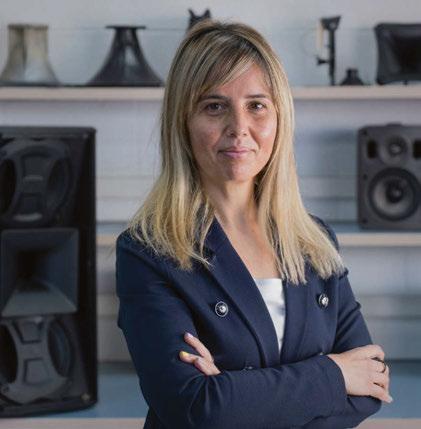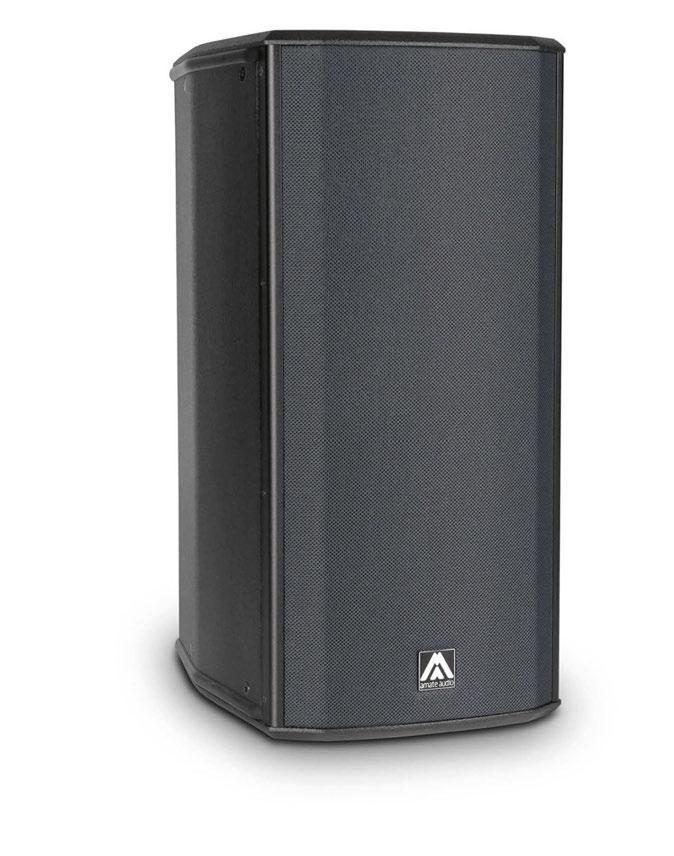
4 minute read
IN DISCUSSION Natàlia Milán, Amate Audio
from MONDO-DR 31.3
Challenging the AV Bias
Amate Audio’s Chief Acoustics Engineer, Natàlia Milán, is unusual, quite possibly unique, in holding an engineering design position with a professional audio manufacturer. She talks about her career and experience as a woman in what remains predominantly a male-populated universe. She also describes her role in the development process of one of the company’s latest loudspeaker models.
Why did I become an engineer? This is probably the most frequent question I have been asked throughout my adult life. In high school, all I wanted to be was a journalist. I was very good at writing and loved football above all else. So, sports journalism was my dream career. At the same time, my skills in maths, physics and science were also very apparent, and I was pressed by my teachers – in the most positive sense – to pursue a technical course in further education. And it was at that point I determined to focus my efforts in gaining a first class degree in Telecommunications Engineering. Having conquered that ambition, I enrolled for a further degree in Electronics Engineering. Here, I discovered acoustics and realised very quickly that it was among the most fascinating things I had ever studied. An internship, as a computer engineer, at AEG-Daimler was quickly followed by the opportunity of a permanent employment at Amate Audio. I knew full well that I would not be an easy choice of candidate for a professional loudspeaker manufacturer. To begin with, I had no prior experience in the field. And then, there were the other not insignificant matters of my age and gender. Pro audio isn’t exactly over populated with young female engineers. But, Amate Audio is a young-thinking company with a progressive outlook. At the age of 23, I was hired as assistant to the then-Senior Acoustics Engineer, returning to the field of physics and engineering I loved most. Three years later, the senior engineer retired and I assumed the role. Amazingly, in the 21st century, some people still find my position in the company unusual, even shocking. But talent has no gender. Personally, I am against moves towards positive discrimination; at the end of the day, everybody wants to work with the most valid people. Nevertheless, there is still much that can and must be done to promote and support the presence of women in technical employment. In 22 years working in the world of sound, all the engineers I have met are men. This is a direct effect of an inherent bias in our society that we must challenge from the very beginning in our nurseries and schools. It is there where we must show and explain that the world of engineering is for girls and boys in equal measure. We must give them tools to discover and explore a world that, for most of the time, is simply invisible to women. I am glad to say that I can count on the fingers of one hand the number of times I have had issues with anyone because of my gender. I feel respected and highly valued, not only by my immediate colleagues at

Previous Page: Natàlia Milán.
Right & Below: Amate Audio’s X102FD loudspeaker.



Amate Audio, but also by the other engineers, suppliers and distributors and end users I interact with. And, besides all the business, projects and problems you find on your professional life, that’s what I’ll keep in my soul.
Acoustic Evolution
The X102FD is our latest sound reinforcement product, a high output, compact active loudspeaker cabinet that can be easily transported, rigged, flown or stacked quickly by just a few people; designed as a more powerful and efficient alternative to a line array in small and medium size environments. I played several key roles during the designing process. First, testing and evaluating what would be the optimum transducers, in terms of performance, quality and cost. At the same time, I began developing a new high frequency horn, specifically for this design. This was a major challenge, in terms of the desired acoustic properties and the required mechanical engineering, and working closely with our industrial designer was essential in perfecting it. A further challenge was configuring all the components – two 10-inch low frequency transducers, the compression driver, horn and built amplifier and control electronics – within the smallest, lightest possible enclosure, that would provide the required levels of performance. Once the size, shape and volumes were determined, we started to work on setting-up the system, using our proprietary Active+ power and control DSP platform. This process of test and adjustment involves me spending many hours in our very large anechoic chamber (at Amate Audio we have two of these to accommodate our continual testing and design procedures). Every parameter is, of course, later validated in hours of listening tests and ‘real life’ demonstrations with the rest of the team. It is the strength of the full engineering team that ensures the success of our product designs. There is a real sense of engineering democracy within the team and in the ways we interact. That is our major strength. Perhaps there is a parallel here with success on the football pitch.








